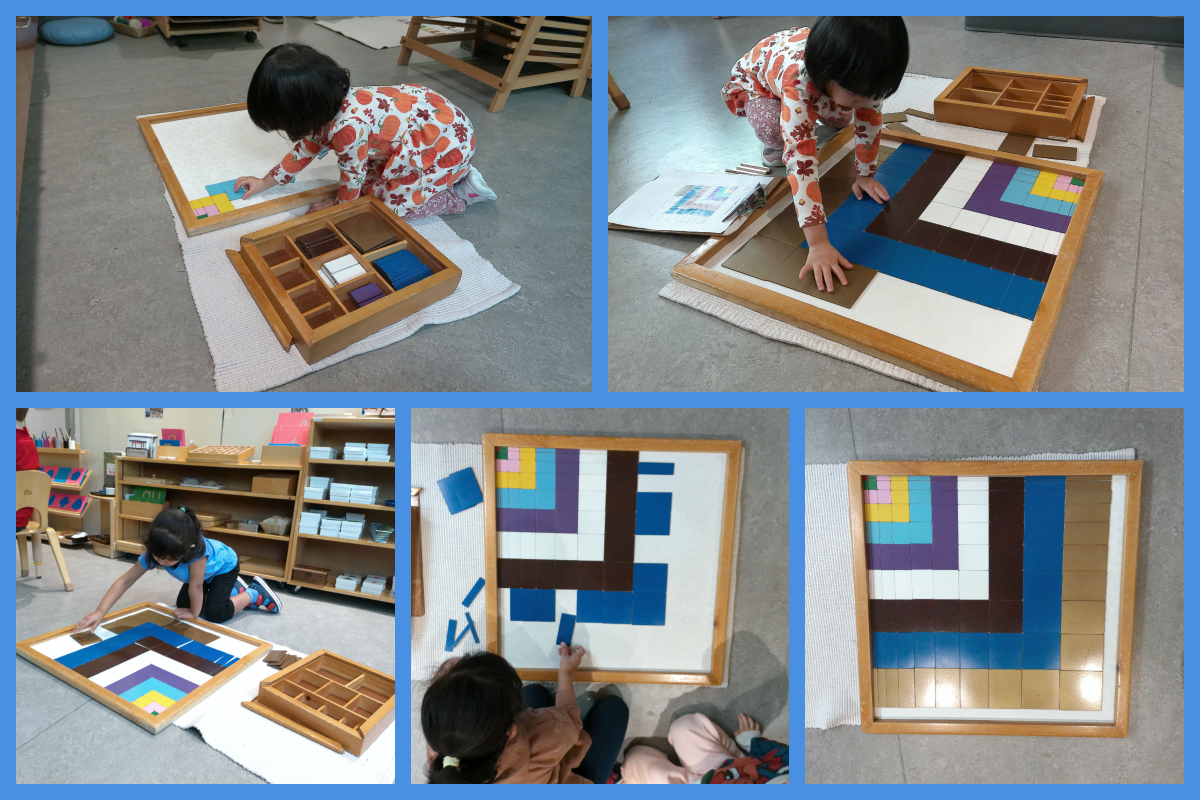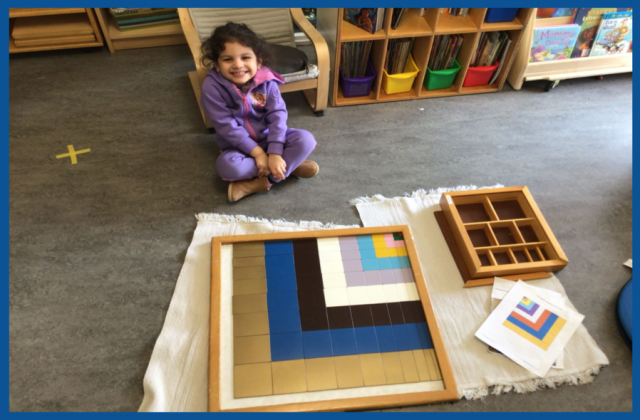Pythagoras Square
The Pythagoras Square introduces children to the foundational concept of geometry and the Pythagorean theorem in an intuitive and interactive way. This beautiful material is designed to help children explore the relationships between numbers, geometric shapes, and the Pythagorean Theorem — a^2+b^2=c^2. (Click for how this happens and the full photos!)
View










